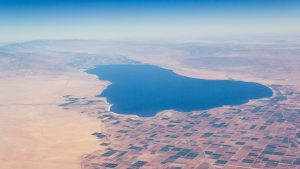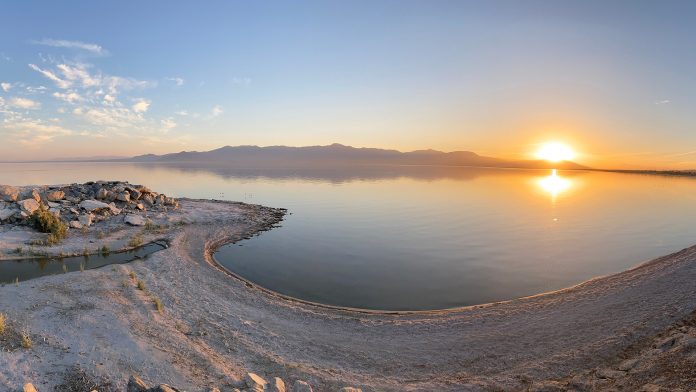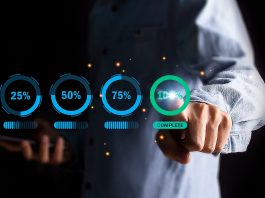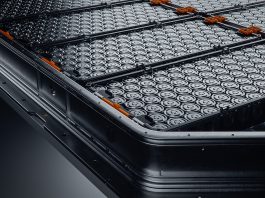Following the publication of its comprehensive analysis into lithium at the Salton Sea geothermal area, The Innovation Platform spoke to the Geothermal Technologies Office at the U.S. Department of Energy about this promising opportunity and its potential implications.
The Salton Sea region in California has been identified as a potential game-changer for the United States’ energy future. A recent report, published in November 2023, by the U.S. Department of Energy and Lawrence Berkeley National Laboratory, detailed the potential of the Salton Sea Region in Imperial Valley, to become a significant domestic source of lithium.
If unlocked, the region would surpass lithium demand in the United States, reducing dependency on imports and establishing the United States on the global lithium stage.
The implications of these findings are far-reaching, as lithium has quickly become an integral resource for the energy transition and is crucial to the production of green technologies such as electric vehicles (EV). The report underscores the potential of extracting lithium from geothermal brines, a by-product of geothermal energy generation, offering the exciting possibility of coupling clean energy generation with the extraction of critical materials.
The Innovation Platform Editor, Maddie Hall, spoke with the Geothermal Technologies Department to discuss this analysis, delving into how this resource could be harnessed, its potential impact on the clean energy landscape in the United States, as well as the broader implications on the global lithium market.
Can you summarise the findings of the analysis of the Salton Sea region in California, and why this resource is significant?
With technological advancements and additional geothermal development, the Salton Sea lithium reservoir resource has the potential to provide the United States with approximately 3,400 kilotonnes of lithium.
Such a huge resource could support over 375 million electric vehicles, exceeding all vehicles currently on the road in the United States. The report completed by the team at Lawrence Berkeley National Laboratory (Berkeley) is, to date, one of the most comprehensive assessments of the lithium resource at the Salton Sea geothermal area.
It included the assessment of the resource itself, the mechanisms, and the accessibility of lithium at the geothermal reservoir.
As part of the analysis, the report also considered the extraction of the lithium, focusing on sustainable extraction, potential environmental impacts, and consideration of the surrounding community.
What is the current state of domestic lithium extraction, refining, and production in the US? How could the Salton Sea region change this?
Our capabilities in the United States, for domestically sourced lithium are currently limited. The demand for lithium is met by importing from Australia, China, Chile, and Argentina, before being exclusively processed in China. We only produce approximately 2% of the global supply, and demand is only rising. The report starts by looking at power production, as the first step towards the production of batteries.
The Salton Sea produces 400 MW of geothermal power, which could equate to 21,500 tonnes of lithium per year that is currently not being commercially accessed. If we look at the total known geothermal resource area, there is the potential to produce 2,950 MW of power and – paired with lithium extraction – it’s this power that could equate to over 375 million electric vehicle batteries. Essentially, developing the resource in the Salton Sea region could turn the United States, into a global lithium exporter as opposed to primarily a lithium importer.

Why is it important to have a strong domestic lithium supply?
In the United States, and globally, lithium is classified as a critical material. It is an integral component of the lithium batteries used in electric vehicles, to charge our computers and smartphones, and more recently, those being developed for energy storage and electric grid reliability.
Demand for lithium is growing, and critical to sustain the development of technological advancements like those aforementioned. Unlocking the potential of the Salton Sea region’s lithium supply will secure this for the United States, as well as supporting the local and national economy by creating jobs, supporting domestic manufacturing, and bolstering national security.
How is lithium extracted from geothermal brines, and what are the benefits of this process?
Hot geothermal brines in the subsurface dissolve minerals in the reservoir rock, and geothermal power plants pump the brine to the surface through wells they drilled. This is an existing process used to generate energy, but among the multitude of minerals dissolved in this brine is lithium.
Once the steam has been passed through the power plant in the power generation phase of the process, the hot brine moves to the direct lithium extraction (DLE) facility. Extraction is completed in two phases, the first of which is the pre-treatment phase. The purpose of this phase is to remove heavy solids like silica and iron, which are prevalent in the Salton Sea geothermal area.
Following the pre-treatment phase, the brine moves to lithium extraction before the process is completed by the reinjection of the brine back into the geothermal reservoir. As a completely closed loop system, it can then be heated up again and ensure a renewable supply.
The overall benefit of DLE is its efficiency and sustainability. The footprint of the facility is magnitudes smaller than the large-scale evaporative mining processes used in South America. CO2 emissions are considerably less than those emitted from hard rock mining operations, and the process can be added to existing geothermal power facilities.
A significant benefit for the Salton Sea, the State of California, and the Department of Energy (DOE) is its coupling with geothermal power. Not only could the region provide us with lithium and its huge economic potential, but it is also accompanied by a clean, renewable, flexible, firm energy resource.
Are there any potential challenges in extracting and refining lithium from geothermal brines?
There are significant engineering challenges associated with making DLE a reality. For DLE, specifically in geothermal conditions, to operate cost effectively requires between 90-95% of lithium recovery. The major challenge globally is the lack of a comprehensive economic assessment.
Without the collective agreement on the global cost or value of combining geothermal and lithium production, it is difficult to truly understand and therefore determine its worth and potential. This is certainly an area of future research.
What technology is the DOE working on to help unlock the region’s potential?
Among the other DOE Offices looking to tackle this problem, the Geothermal Technologies Office has funded research in several different ways. Recently, we concluded the American-Made Challenges Geothermal Lithium Extraction Prize, a three-phase prize in which teams competed to win a total of $4m by developing a DLE process.
DLE is still early in its development, and there are a lot of engineering challenges that remain to be tackled, and this prize granted an early look into potential technological solutions. The next step is an $11m research and development programme joint with the Advanced Materials and Manufacturing Technology Office (AMMTO) that will continue to fund DLE technology and address key challenges. It is a critical materials collaborative, utilising multiple parts of the DOE in different capacities. The objective is to secure the critical materials supply in the United States using a comprehensive approach.
At the Geothermal Technologies Office, we are looking into the extraction of these critical materials from geothermal brines. Other parts of the Department are looking into how critical materials might be extracted from alternative feedstocks, such as coal, as well as capabilities to recycle these materials.
In November 2023, the DOE announced its funding opportunity for Critical Materials Accelerator Projects. This opportunity will be the next phase in creating the technologies and manufacturing capabilities to support the sustainable critical materials supply so important in the development of green technology.
How does this comprehensive study into the lithium of the Salton Sea region align with the U.S. Department of Energy’s goals for clean energy? What are the environmental implications of lithium extraction in the Salton Sea region?
This comprehensive study is the first of its kind in the Salton Sea region to date, intending to quantify the lithium. The Berkeley analysis grants us a more complete picture of the resource, insight into its scale, and the role of the Salton Sea region in America’s clean energy future.
One of the Biden-Harris Administration’s goals is a net-zero carbon economy by 2050; not only does the work of the DOE align with this target, but so does the process of DLE.
As an environmentally friendly alternative to other methods of lithium extracted, the environmental implications are comparatively limited. It is greener in itself, but it is also utilised in green technology including carbon-reducing EVs.
Furthermore, the expansion of geothermal electricity generation will support the goal of providing clean, firm, flexible power that can balance intermittent clean energy like solar and wind.
The primary impacts identified in the report are the water requirements and generation of solid waste. There is a high concentration of dissolved solids in the brine that must be removed in the process of extracting lithium and potentially other economically recoverable minerals. This is certainly an area of future interest and research, as we consider possible uses or disposal solutions for this waste.
Potentially, this impact could be mitigated by converting some of those by-products into economically viable products themselves.
Regarding water usage, 95% of the water used in California’s Imperial Valley (the location of the Salton Sea) is for agricultural purposes. Approximately 90% of the United States’ winter greens come from Imperial Valley, highlighting how agriculturally significant the area is. It is anticipated that the availability of water to the Imperial Valley will decrease with the increase of geothermal energy and DLE in the region. This is due to the Colorado River diminishing, the source of surface water for all agricultural use.
To combat this, companies are investigating water recycling capabilities and conservation, as well as generally how to mitigate this risk in recognition of its potential for economic disruption.
One area currently under consideration is potential uses for the geothermal steam and technology to recycle this. Though there are potential ramifications of the extraction technique, research is underway to find solutions and ensure we continue to rely on an already diminishing water resource.
How will the report impact the role of the US in the global lithium supply chain and what are the next steps following the analysis?
If the Salton Sea geothermal area is fully developed, the resulting lithium extraction industry could turn the United States into a global lithium exporter and replenish the global battery supply chain with an influx of sustainable lithium. The available resource could also enable the United States to meet, or possibly exceed, global lithium demand for decades.
Overall, the Geothermal Technologies Office, and the DOE at large, continue to support DLE and other critical material research, including technologies that can unlock the Salton Sea region’s full lithium resource potential.
Furthermore, we are exploring the possibility of comprehensive economic assessments, evaluating the cost and merit of combining geothermal and lithium production. We are also investing in technological developments in drilling materials and instrumentation that will enable us to fully access the temperatures required for clean geothermal generation.
The DOE is analysing the Salton Sea area’s lithium resource in terms of full access and intending to answer key questions that will determine if it is viable. How do we get to the lithium? How do we ensure the future of geothermal power? How do we properly manage the lithium resource? There is a lot of research still to be done in order to fully access this world-class resource, but this analysis is a considerable step towards this milestone. For more information and to keep informed about the Salton Sea geothermal area, visit Geothermal Technologies Office and its Interactive Lithium Storymap.
Please note, this article will also appear in the seventeenth edition of our quarterly publication.










